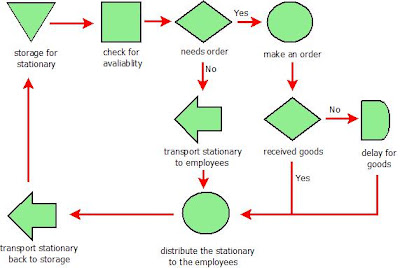CRM, or Customer Relationship Management, is a company-wide business strategy designed to reduce costs and increase profitability by solidifying customer loyalty. True CRM brings together information from all data sources within an organization to give one, holistic view of each customer in real time. This allows customer facing employees in such areas as sales, customer support, and marketing to make quick yet informed decisions on everything from cross-selling and upselling opportunities to target marketing strategies to competitive positioning tactics.
There are three key elements to a successful CRM initiative: people, process, and technology.
- The people throughout a company-from the CEO to each and every customer service rep-need to buy in to and support CRM.
- A company's business processes must be reengineered to bolster its CRM initiative, often from the view of, How can this process better serve the customer?
- Firms must select the right technology to drive these improved processes, provide the best data to the employees, and be easy enough to operate that users won't balk.
If one of these three foundations is not sound, the entire CRM structure will crumble.
It's a strategy used to learn more about customers' needs and behaviours in order to develop stronger relationships with them. After all, good customer relationships are at the heart of business success. There are many technological components to CRM, but thinking about CRM in primarily technological terms is a mistake. The more useful way to think about CRM is as a process that will help bring together lots of pieces of information about customers, sales, marketing effectiveness, responsiveness and market trends.
CRM is best suited to help businesses use people, processes, and technology to gain insight into the behaviour and value of customers. This insight allows for improved customer service, increased call centre efficiency, added cross-sell and up sell opportunities, improved close rates, streamlined sales and marketing processes, improved customer profiling and targeting, reduced costs, and increased share of customer and overall profitability.
For CRM to be truly effective, an organization must convince its staff that change is good and that CRM will benefit them. Then it must analyze its business processes to decide which need to be reengineered and how best to go about it. Next is to decide what kind of customer information is relevant and how it will be used. Finally, a team of carefully selected executives must choose the right technology to automate what it is that needs to be automated. This process, depending upon the size of the company and the breadth of data, can take anywhere from a few weeks to a year or more. And although some firms are using Web-based CRM technologies for only hundreds of dollars per month per user, large companies may spends millions to purchase, install, and customize the technology required to support its CRM initiative.
Using CRM, a business can:
- · Provide better customer service
- · Increase customer revenues
- · Discover new customers
- · Cross sell/Up Sell products more effectively
- · Help sales staff close deals faster
- · Make call centers more efficient
- · Simplify marketing and sales processes
The advantages can be summarized according to the Feature
Marketing
- · Make intelligent business decisions with enhanced customer insights
- · Increase marketing velocity and speed to market
- · Maximize visibility into and control of your entire marketing process
- · Drive customer demand
- · Increase returns on your marketing investments
Sales
- · Grow profitable relationships
- · Maintain focus on productive activity
- · Eliminate barriers to productivity
- · Improve sales efficiency Service
- · Transform service into a profitable line of business
- · Increase customer loyalty
- · Drive revenue
- · Reduce costs of customer service and field service
- · Decrease service giveaways
Web channel enablement
- · Drive revenue and extend market reach
- · Increase customer convenience and satisfaction
- · Reduce the cost of sales and support
- · Build lasting customer loyalty
- · Improve sales and service profitability
Running an interaction center
- · Increase customer satisfaction
- · Improve credibility with your customers
- · Increase revenue and productivity
- · Manage the customer interaction life cycle
Partner channel management
- · Boost revenue through channel collaboration
- · Reduce indirect channel support costs
- · Increase partner satisfaction and ease of doing business
- · Maximize value to your customers by enabling your partners
Microsoft Dynamic CRM:
Reference:






